Why should you pay more attention to designing order pickup methods and fine-tuning them regarding E-Commerce User Experience?
The initial response to this question is the research results from Baymard Institute, according to which over 70% of E-Commerce users in the USA abandoned the purchase due to the high cost and slowness of deliveries.
What does that mean?
This means a chance for online stores that offer the ability to pick up the order in the stationary store or deliver it to it.
Personal pickup is more or less convenient, but it has an advantage in the form of being much quicker (in many cases, the order is ready for pick up the next day or even after a couple of hours) and cheaper.
Of course, this is only one of the options which should be designed by following the best recommendations and design patterns.
Designing order pickup methods for your online business is our topic today.
Enjoy!
Picking up an order in E-Commerce and problems with microcopy
Impressions and E-Commerce user/customer experience are very broad and complex sets of problems. They're quite a challenge for UI/UX designers. Picking up the order is precisely one of these problems.
Although it may seem inconspicuous and uncomplicated, in reality, it is much more complex. Unfortunately, due to its inconspicuousness, it is easy to ignore. And that is a big mistake.
The pickup method is one of the most important variables influencing purchasing decisions.
Only informing users about whether the package will be delivered to the indicated address, selected stationary store, or pickup point (e.g., parcel locker) definitely is not enough.
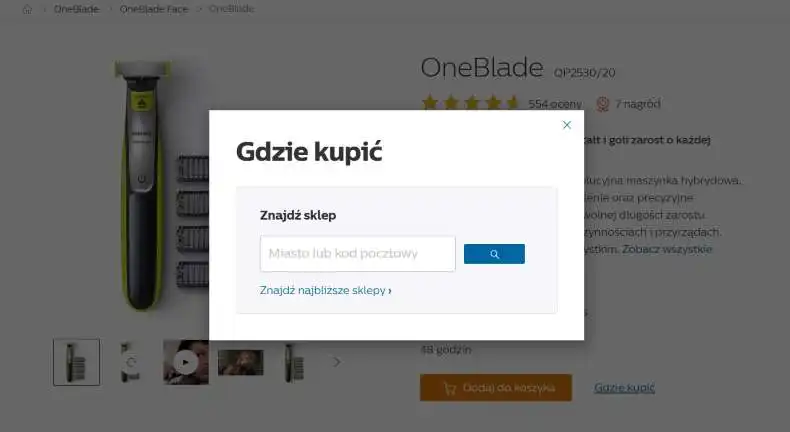
Problems with pickup
The research conducted by Baymard Institute on order fulfillment and store pickup revealed a couple of very interesting things. Let's discuss one of them. We recommend you read through this study because it explores several issues that aren't commonly known.
As a side note, we should add there are no doubts about the methodological reliability of the research from the Baymard Institute. The basis for the presented conclusions, comments, analysis, and recommendations was a comparative study (benchmarking) of the 80 most popular E-Commerce websites in the United States.
Okay, what did we find out? The option to pick up an order in the stationary store is often not chosen due to the discrepancies in the interpretation of the labels assigned to it.
"Pickup at the store," "availability in the store," "store delivery," and "reservation in store." These names on a site or in the online store look like synonyms, and it seems like they shouldn't raise any doubts.
Unfortunately, for many online store customers, it's unclear where the package will be sent. For example, there's no certainty whether it will be sent to the store (meaning its availability will be guaranteed and the customer will have to wait for it) or if the customer needs to go to the nearest store where the product will be available.
Remember that the variety of options doesn't support the speed and ease of selection. From a psychological perspective, the most optimal way is to offer the choice among three variants.
The availability of various options, although tempting in terms of flexibility and openness, paradoxically can result in decision paralysis.
That's why you should simply place different variants under the "store pickup" label and offer their details in the next steps of order processing.
You can find a more detailed description of these problems in the article "Users Overlook' Store Pickup' When Not Presented as a Shipping Option."
Microcopy
While designing order pickup methods, you must take care of the understandability and unambiguousness of microcopy.
Remember that the refined microcopy increases users' engagement and influences user experience.
It also improves the usability of the online store and conversion rate results. It's also directly responsible for reducing tensions and negative feelings caused by inconclusive situations.
The location of the pickup methods option in an online store
Moreover, the location of this function in the online store is also an issue. It's not always in a place where, according to E-Commerce users, it should be.
While more determined and patient users often look for information about pickup methods on dedicated pages (e.g., F.A.Q., terms of delivery), the majority of customers that don't see this option in the expected place simply don't use it.
So, where do Baymard Institute researchers suggest placing this functionality? Store pickup should be offered as one of the options in shipping methods.
Both of these — shipping and pickup — should be treated as complementary. It's recommended to regard them as a compatible tandem.
The section about delivery on the product page should include the following information:
- On the place from which the product will be sent (along with contact information)
- On the place where the package will be sent
- On the place where the product can be viewed (in-store option)
- On pickup at the collection point (along with the cost and estimated delivery time)
- On pickup at the indicated address (along with the cost and estimated delivery time).
Online store customers should also be able to locate the nearest stationary store with the postal code or name of the city.
That said, offering information about the product's availability at the chosen address is essential. It's also worth offering customers the option to reserve the product in a specific store.
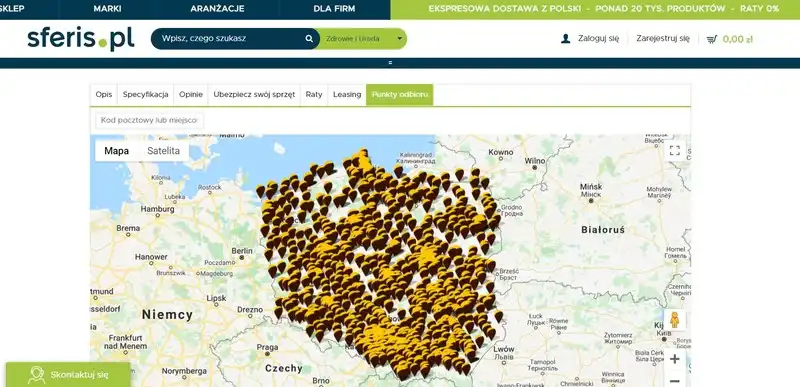
Such functionalities support the use of pickup options at a specific store and are an important value and incentive.
The reservation of the product in the online store should allow the customer to:
- Learn about the timeframe within which the product will be available for them
- Receive a notification across multiple channels (e-mail, text message, push notification) about the product being ready for pickup
- Familiarize themselves with the order pickup procedure (it's recommended to offer separate pickup collection points in stationary stores)
- Contact the store's staff which handles the orders placed online.
Picking up orders at the stationary store significantly speeds up the time of order placement because it doesn't involve the need to enter contact details into the disliked form.
Also, remember to include information about order limits since they can impact the availability of pickup options and, for example, can make the collection of an order at a stationary store impossible.
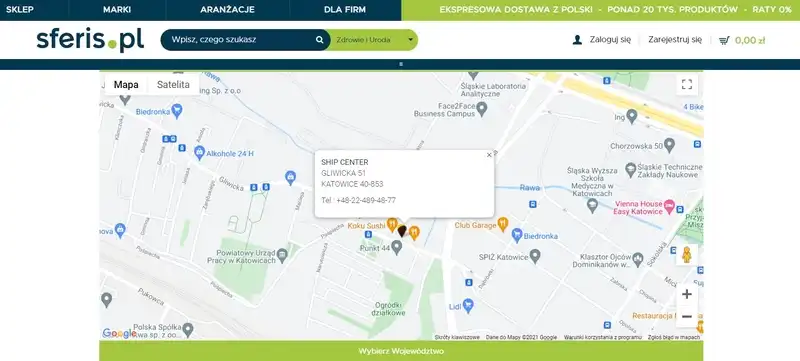
Today fast order fulfillment is a standard and a necessity. It's a global trend in E-Commerce which we wrote about in the article "What does speed mean in E-Commerce?."
Speed is the significant advantage of this option. Hence, it's essential for the fulfillment of the customer's order to offer specific information about the place, date, time of the pickup, and about preparation times.
Pitfalls of the pickup methods in online stores
When designing pickup methods, it is also worth being aware that the selection of a preferred place to pick up a package is not always the same as the physical proximity to the place where the user is located when placing an order or the place they have given as their home address.
The first variant refers to the geolocation functionality offered in mobile versions of the store. The second concerns the customers who have an account in the store.
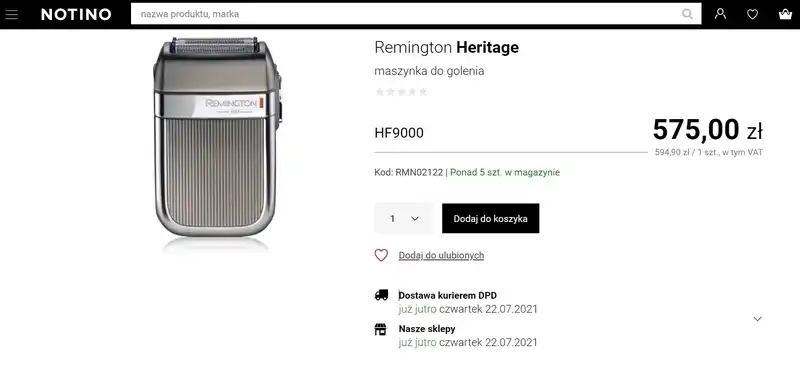
Automatic suggestion of a delivery place
Of course, offering the automatic suggestion of the place of delivery is not a design mistake, but it can't be the only option. The choice, which the store guarantees, should be authentic. It should allow the user to independently determine the place of delivery from the list of store addresses or locations marked on a map.
Here, it's worth mentioning a remark made by Varatharajan in the article "UI/UX Case Study of E-commerce shipping." According to him, users usually have no idea about the criteria used by algorithms to suggest the optimal pickup place.
And when they aren't aware of this, they don't know whether the system picks the optimal place for them.
Control over the selection process is always a source of positive experiences. In particular when automatic suggestions aren't precise or can't offer results compatible with the need of the user.
Expectations of customers
What are the expectations of E-Commerce customers? Here it's nice to remember the article "The New Ecommerce User Experience: Changes in Users' Expectations" written by authors associated with Nielsen Norman Group: Kim Salazar and Anna Kaley.
E-Commerce customers have concrete expectations toward stores which can be boiled down to 6 values.
Namely:
- Convenience
- Speed
- Assurance
- Accuracy
- Options
- Experience.
The above expectations also refer to the method of order pickup, which should be maximally convenient, fast, and in line with the declaration expressed on the product page and dedicated pages on which delivery and pickup methods are described in detail.
Conditions and dilemmas of shipping and picking up an order from an online store
According to the research conducted by Nielsen Norman Group, online store users first consider the date of receiving an order (expressed in a concrete question: "When exactly"?) and shipping costs.
Delivery company, the method of transport, and product safety measures, although important, aren't considered the most crucial matters.
Researchers from NN Group noticed, and this complements our above findings, that the decision regarding the choice of delivery method and order pickup is influenced by such factors as:
- Cost
- Ease and speed of reaching the stationary store
- Days and hours of operation of the store.
E-Commerce customers/users often make fast comparisons and evaluations of delivery and personal pickup costs.
And most often, they choose the option that is the product of these two variables, which is a compromise between cost and convenience.
Due to the trend of rapid estimates of the profitability of given configurations, the cost and methods of delivery, location of the stationary store, and available pickup dates should be visible by default as crucial information.
Continuously informing customers about delivery costs (including delivery costs to the stationary store, if applicable) also is not recommended because it makes it harder for them to make estimates, evaluations, calculations, and decisions.

Independent calculations should be possible to do before E-Commerce customers are asked to enter their personal data and the address for shipping and pickup.
Remember that entering personal data and location by the customer involves a cost and spending time and energy which, without crucial information, is seen as risky and potentially worthless.
More importantly, the frustration caused by performing work for nothing and engaging in the buying process is certainly not conducive to continuing or repeating a purchase.
As a small side note, some applications like the Zapiet app offer a "rates feature" that enables you to display accurate delivery and shipping costs.
Unobvious order pickup methods
Experiences of online store customers with delivery companies are a topic for a separate article. It's enough to say that delivery services, more often than not, are a source of problems, mainly concerning the dates of delivery but also delivery methods.
Issues that delivery companies aren't always responsible for. Most misunderstandings also result from behaviors and misconceptions of online store customers.
Often it so happens that the delivery person doesn't find the recipient at home, or the contact with them can't be, for various reasons, direct (face-to-face).
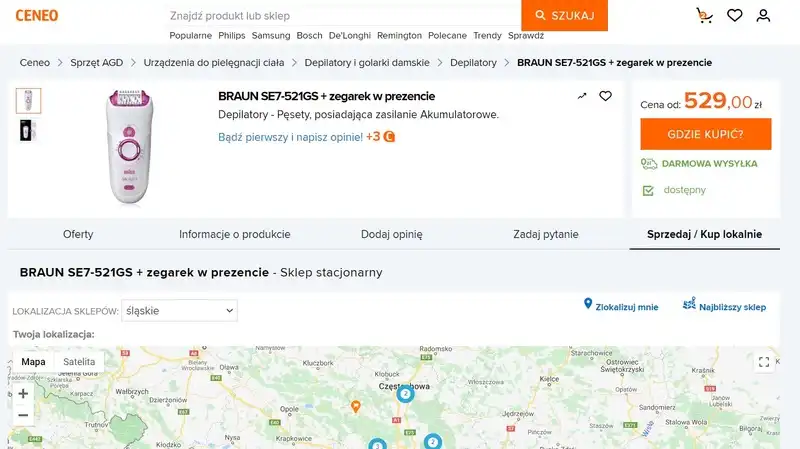
Offering the ability to determine the reactions/actions of the delivery person in such situations is very helpful. It's recommended to design special fields with delivery instructions to optimize the section about order pickup methods.
The design of pickup methods also means creating options for conveying such information as: "Should I not be at home, please leave the package with the neighbors, the doorman, at the door, at the back of the house."
The order pickup method should also have the option of using a precise pickup schedule for delivery orders.
In the case of troublesome, demanding products (like furniture or groceries that, due to their size, vulnerability to damage, and rapid spoilage, are difficult to transport), it's worth offering the option to arrange a specific time of pickup or at least guarantee direct contact with the delivery person.
Shipping methods
To end this article, we would like to briefly mention the types of shipping methods that you may consider using in your online store.
The article "Shipping Shopping: 8 Types of Shipping and What They Mean for Your Business" on Shopify suggests eight types of shipping methods, and we would like to summarize them for you.
Expedited shipping
Expedited shipping is an umbrella term that describes the shipping time that is faster than the regular speed. Every carrier has a different name for it and offers different shipping rates and times, so pay attention to them.
Overnight shipping
Overnight shipping is similar to expedited shipping. It's just more specific. It means the order will arrive or at least should the next day (after it is shipped).
Priority Mail
It's a brand name belonging to USPS, so you won't encounter it outside their delivery service. The order will be shipped within 1-3 business days (within the US). Additionally, USPS also offers other services within Priority Mail, such as Priority Mail Express, Priority Mail International, or Priority Mail Express International.
Flat rate
It's a very beneficial shipping option if you send a lot of heavier items in individual packages. In this option, you pay a flat rate for a specific-sized box, regardless of its content and weight. However, do remember that it may not be an ideal option if you ship light or individual items.
Multiple addresses
This option allows the customer to ship different items to different addresses within one order. It also enables them to combine various delivery methods like local delivery and pickup at a collection point.
Local delivery or pickup
The name is self-explanatory. You can set up a radius around your business and handle the deliveries yourself or with the help of your employees. The customers themselves can also go and pick up their items in-store. This is a good option for small online stores that begin their journey in the E-Commerce world.
International shipping
International shipping involves dealing with customs declaration and forms, taxes, tarries, and duties. Therefore you need to pay special attention to calculating total costs for delivery since they will vary from country to country.
Freight
Freight shipping usually comes into play in the case of huge orders of 150 pounds and higher. If your online store faces such big demands, then Freigh is the option for you.
Designing order pickup methods. Summary
- The order pickup method is one of the most important variables influencing purchasing decisions.
- The option to pick up an order in the stationary store is often not chosen due to discrepancies in the interpretation of the labels assigned to it.
- While designing pickup methods, you must take care of the understandability, unambiguousness, concreteness, and usefulness of microcopy.
- E-Commerce users expect to be offered information about order pickup and available shipping methods.
- The order pickup methods should be designed as an important part of the collection of information and functionalities.
- It's recommended to think about delivery methods and order pickups holistically.
- Treating pickup and delivery methods as combined functionalities allows you to exploit their potential.
- Offering the pickup at a stationary store significantly speeds up ordering time.
- Offering automatic suggestions of the pickup location is not a design mistake, but it can't be the only option.
- The order pickup service should be convenient, fast as possible, and in line with the declaration expressed on the product page.
- Online store users first consider the delivery cost and the date of receiving an order.
- E-Commerce customers often make fast comparisons and evaluations of delivery and personal pickup costs.
- The result of cost estimation (understood not only financially but also qualitatively—convenience) is an essential factor influencing the final E-commerce customer decision.
- It's recommended to design special fields with delivery instructions to optimize the section about order pickup methods.






